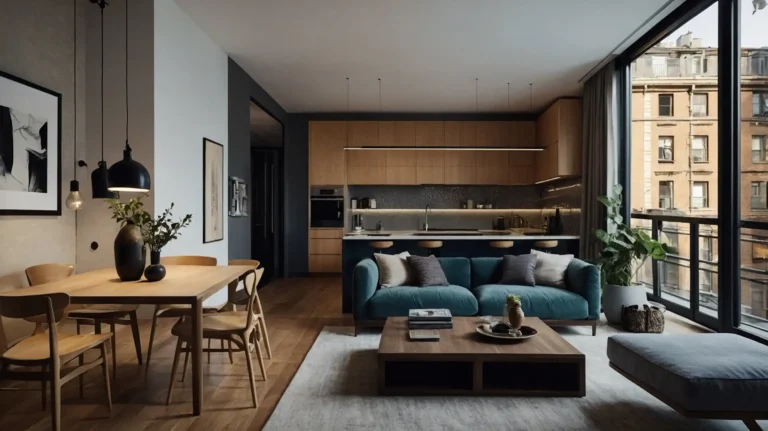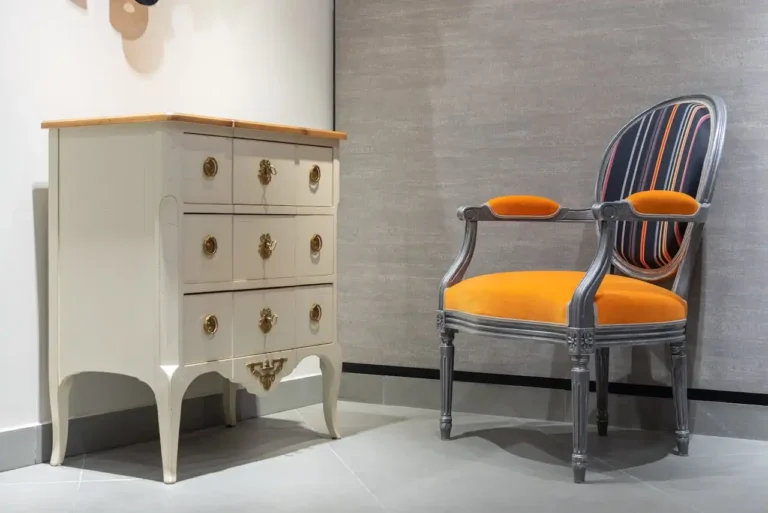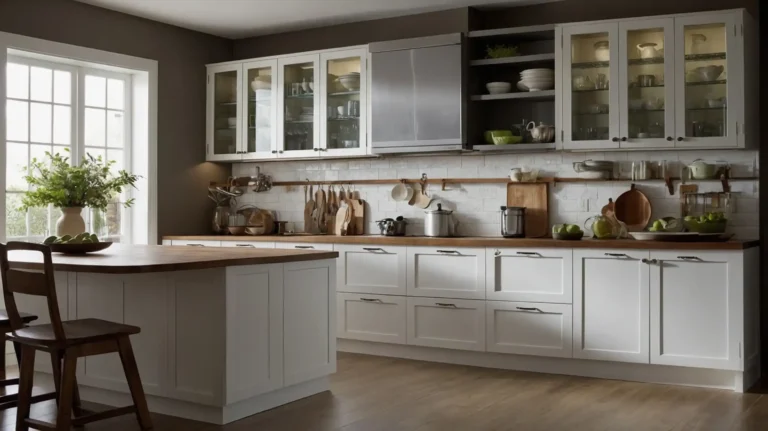The Rule of 3: A Simple Trick for Perfectly Balanced Décor
You walk into a beautifully decorated room and immediately feel drawn to it. Something about the space feels just right.
The secret behind that perfectly balanced look isn’t expensive furniture or professional training. It’s a simple design principle that transforms any space.
Welcome to the Rule of 3 – your ticket to effortlessly stylish decor. This timeless trick creates visual harmony in minutes.
What Is the Rule of 3?

The Rule of 3 states that objects arranged in odd numbers, particularly groups of three, create more visual interest and feel more natural to the human eye than even-numbered arrangements.
You’ll find this principle everywhere in successful interior design, from the way professionals style coffee tables to how they arrange throw pillows on sofas.
Think about it this way: when you see two identical items side by side, your brain immediately notices the symmetry and moves on.
But three items? That creates a dynamic triangle that keeps your eye engaged and interested.
This principle isn’t just about the number three specifically. It extends to all odd numbers, but three hits the sweet spot between visual interest and simplicity.
Five or seven items can work beautifully too, but three remains the most approachable starting point for beginners.
Why Your Brain Loves the Rule of 3
Your brain processes odd-numbered groupings differently than even ones. Scientists have studied this phenomenon extensively.
Even numbers create perfect balance, which might sound good in theory, but actually feels static and predictable to your eye.
Odd numbers introduce just enough asymmetry to create movement and energy in your space. Pay attention to the visual weight of each piece too.
Research shows that odd-numbered arrangements appear more organic and pleasing because they mirror patterns found in nature.
Think about how flowers bloom in clusters or how tree branches extend – rarely in perfectly symmetrical pairs.
The triangle formation that three objects naturally create also provides multiple focal points for your eye to travel between.
This creates what designers call “visual flow” – the way your gaze moves around a room, keeping you engaged rather than quickly scanning and moving on.
When you apply this principle, you’re essentially creating mini-compositions throughout your home that feel both intentional and effortless.
Mastering Furniture Arrangements
Start with your largest pieces first. Remember that negative space counts as an element in your arrangement.
If you’re arranging seating in your living room, consider how three distinct seating options – perhaps a sofa, armchair, and ottoman – create a more dynamic conversation area than just two matching chairs facing each other.
You don’t need three identical pieces either. Mix different heights, shapes, and textures to add depth to your arrangement.
A tall bookshelf, medium-height console table, and low coffee table can create an appealing stepped effect along one wall.
A heavy wooden dresser might balance perfectly with two lighter pieces – maybe a delicate side table and a tall floor lamp.
The key lies in creating equilibrium without perfect matching. Sometimes the best third “piece” is simply empty space that allows the other two items to breathe and stand out.
Styling Decorative Objects Like a Pro
Coffee tables and bookshelves become your playground for practicing the Rule of 3.
Start with three objects of varying heights – perhaps a tall vase, medium-sized book stack, and small decorative bowl.
Vary the textures and materials to add visual interest. Combine smooth ceramics with rough natural materials, or mix metallic finishes with organic wood pieces.
This contrast creates depth and prevents your arrangement from looking too matchy-matchy. Don’t forget about color relationships within your groupings.
Consider the shapes you’re combining too. A round object, square object, and something with curves creates more visual intrigue than three identical shapes.
Think about a cylindrical candle, rectangular picture frame, and organically-shaped succulent planter.
You might choose one dominant color with two accent colors, or work with different shades of the same color family for a more subtle approach.
Creating Stunning Color Schemes

Color application follows the Rule of 3 beautifully. Professional designers often work with a 60-30-10 color formula that divides a room’s color palette into three distinct portions.
Your dominant color should cover about 60% of the room – think wall color, large furniture pieces, and major textiles like curtains or large rugs.
This creates your foundation and sets the overall mood. This color should complement your dominant shade while adding visual interest.
The secondary color fills about 30% of the space through medium-sized elements like throw pillows, smaller furniture pieces, or accent walls.
Your accent color appears in roughly 10% of the room through small decorative objects, artwork, or single statement pieces.
This pop of color creates excitement and prevents the space from feeling monotonous. You can also apply this principle to pattern mixing.
Choose one large-scale pattern, one medium-scale pattern, and one small-scale pattern to create layers without overwhelming the space.
Lighting That Actually Works
Layer your lighting using three distinct types: ambient, task, and accent lighting. These create focal points and add personality to your room’s lighting scheme.
This approach ensures your room functions well while creating the perfect atmosphere for any activity.
Ambient lighting provides overall illumination through ceiling fixtures, chandeliers, or recessed lights.
This forms your lighting foundation and should evenly distribute light throughout the space.
Task lighting focuses on specific activities through desk lamps, reading lights, or under-cabinet kitchen lighting.
Position these strategically where you actually need concentrated light for work or hobbies.
Accent lighting adds drama and highlights specific features through picture lights, table lamps, or architectural lighting.
Within each category, you can apply the Rule of 3 again. Three pendant lights over a kitchen island look more balanced than two or four.
Three table lamps of varying heights create better visual flow than matching pairs.
Wall Art Arrangements That Wow
Gallery walls become much easier when you think in terms of three.
Start with three pieces as your foundation – perhaps one large statement piece flanked by two smaller coordinating works.
Vary the sizes and orientations within your grouping. A large horizontal piece, medium vertical piece, and small square piece create more visual interest than three identical prints in a row.
Consider the spacing between pieces as carefully as the pieces themselves. Equal spacing can look formal and static, while slightly varied spacing feels more organic and interesting.
You can also group multiple small pieces into three distinct clusters along a wall, creating separate vignettes that work together as a cohesive whole.
Bringing Nature Indoors
Plants follow the Rule of 3 naturally, since they grow in organic, asymmetrical patterns. Group three plants of different heights and leaf textures to create instant visual appeal.
Mix your container styles too. A tall floor planter, medium tabletop pot, and small hanging planter create layers and draw the eye upward through your space.
Consider the growth patterns of your chosen plants. Upright plants, trailing varieties, and bushy species each contribute different shapes to your arrangement.
Don’t limit yourself to living plants either. Incorporate dried branches, artificial plants, or botanical artwork as part of your three-element nature displays.
Common Mistakes to Avoid
The biggest mistake you can make is thinking all three items need to match perfectly. Identical triplets actually work against the principle by creating too much symmetry and predictability.
Avoid placing all three items in a straight line unless you’re creating a formal, symmetrical look. Triangular arrangements feel more natural and engaging than linear ones.
Don’t ignore scale relationships between your three elements. Items that are too similar in size compete for attention, while pieces with too much size variation can look unrelated.
Remember that the Rule of 3 is a guideline, not a rigid law. Sometimes two items or four items might work better for your specific space and needs.
Advanced Applications
Once you master basic groupings of three, start thinking about how multiple groups of three can work together throughout a room.
Three groupings of three objects each can create a sophisticated, layered look. You can even apply this principle to scent and sound.
Consider applying the principle to architectural elements too. Three windows, three doorways, or three built-in shelving units can create pleasing rhythms in your space.
Think about seasonal decorating through this lens. Swap out one element of your three-item groupings to refresh your look without completely redecorating.
Three complementary candle scents or three different textures that create subtle sounds (like wind chimes, water features, and rustling plants) engage multiple senses.
Making It Work in Small Spaces
Small spaces benefit enormously from the Rule of 3 because it prevents overcrowding while still creating visual interest.
Choose three statement pieces rather than many small items that create clutter. Vertical arrangements work particularly well in compact rooms.
Stack three books, place a plant on top, and add a small decorative object to create height without taking up floor space.
Use the principle to decide what stays and what goes. If you have five decorative objects competing for space on a small shelf, choose the best three and store the others for seasonal rotation.
Seasonal and Holiday Applications
Holiday decorating becomes much easier when you think in threes. Rotate your groupings seasonally to keep your space feeling fresh.
Three different sized pumpkins for fall, three varieties of evergreen branches for winter, or three spring flower arrangements create instant seasonal charm.
The same three-spot arrangement can showcase summer shells, autumn leaves, and winter pinecones throughout the year.
Consider color seasonality too. Your three-color palette might shift from warm autumn tones to cool winter shades while maintaining the same basic structure.
Budget-Friendly Implementation
You don’t need expensive items to make the Rule of 3 work. Thrift stores, yard sales, and discount retailers offer plenty of options for creating interesting groupings.
Focus on shape and texture variety rather than brand names or price points. DIY projects work beautifully for Rule of 3 applications.
A interesting piece of driftwood can work just as well as an expensive sculpture in the right arrangement.
Paint three mason jars in coordinating colors, or create three pieces of simple artwork using the same techniques but different color schemes.
Long-Term Success Strategies

Document arrangements that work well with photos so you can recreate them after cleaning or rearranging.
This helps you remember successful combinations and builds your confidence with the principle.
Start a collection of items specifically for Rule of 3 styling. Practice the principle in low-stakes areas first.
Having a variety of objects in different sizes, colors, and textures makes it easier to create new arrangements when you want to refresh your space.
Bathroom counters, bedside tables, or kitchen window sills provide perfect practice spaces before you tackle major living areas.
Conclusion
The Rule of 3 transforms your decorating from guesswork into confidence.
Master this simple principle and watch your spaces come alive with perfect balance.







